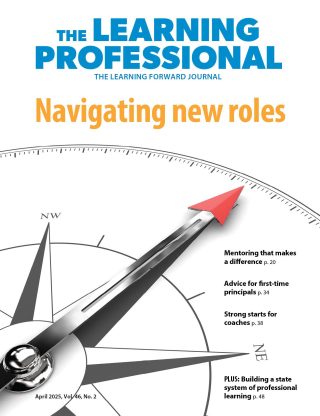FOCUS
What to do when the kids aren’t alright
By Ginger Christian, Megan Quinn and Virginia Foley
October 2022
In the aftermath of the acute phases of COVID-19, some schools are adopting trauma-informed, high-leverage practices to help educators and students cope with the psychological impact of the pandemic on learning. But given the scope of the pandemic’s devastation, scattershot approaches are not enough. We need systemic approaches to ensure that all educators and students can benefit from trauma-informed approaches.
East Tennessee State University and Unicoi County Schools recognized the value of developing and sustaining a partnership to build strategies and leadership capacity for trauma-informed systems. Seeing the need for professional learning, coaching, and assessment tools, the professors and researchers at the Strong Brain Institute and Educational Leadership and Policy Analysis Department developed a five-year strategic partnership with the school district.
Through this partnership, we are designing a pre-K-12 resilient schools district model so students will receive a continuum of services through elementary, middle, and high school transitions. The trauma-informed system highlights social and emotional learning and resilience and how they are connected to academic excellence and college and career opportunities.
Trauma’s impact
Although most educators recognize that many students have experienced trauma as a result of the pandemic, they may not be familiar with the research showing the impact of trauma and stress on students’ developing brains.
The ability and capacity to deal with stress is controlled by a network of related brain circuits and hormone systems that are inherently designed to adapt to various challenges. When a person experiences a stressful or threatening situation, the brain triggers the release of stress hormones that heighten awareness and help prepare the body and brain to respond to an immediate threat. In our evolutionary history, this process has been vital to survival.
But long-term elevation of stress hormones can negatively impact the brain. For example, prolonged activation of the stress response can lead to impairments in learning and memory (National Scientific Council on the Developing Child, 2014). It can also lead to changes in the expression of genes associated with physiological and psychological disorders — that is, stress can effectively switch on (or off) certain genetic traits and dispositions (Elhert, 2013).
These effects are more likely to occur under conditions of what is known as toxic stress — stress that is chronic, uncontrollable, or experienced by a child with no support system — and with exposure to adverse childhood experiences (National Scientific Council on the Developing Child, 2014). The impacts of toxic stress and adverse childhood experiences, which are sometimes known as ACES, are particularly marked in early childhood, when the brain is especially pliable.
Toxic stress at this important developmental stage can lead the brain to be either over- or underreactive to perceived threats, even small ones (Loman & Gunnar, 2010). This can lead children to develop poorly controlled stress responses and struggle with self-regulation as well as feelings of anxiety and depression — and these effects can persist into adulthood if not addressed.
Fortunately, it is possible to reverse this pattern and help children develop a healthy stress response. Researchers have found that the presence of a positive and responsive caregiver can serve as a buffer against stress system activation (National Scientific Council on the Developing Child, 2014). And the more positive and caring adults surrounding the child, the better.
That’s where schools come in. Sometimes, school is the only place where a child finds a supportive adult. Even for students who have caring relationships outside of school, it makes a difference to interact with educators who are responsive and knowledgeable about trauma because that creates a web of support around the student. A universal approach to trauma-informed practice is important because we cannot always see which students have experienced trauma and its impacts.
Systems approach
Because of the ongoing and persistent effects of trauma and stress, trauma-informed practice is not a program or a one-and-done event. We believe that schools should provide a continuum of services through a multiyear cycle to initiate, continue, and leverage trauma-informed resources for students. A trauma-informed approach should be embedded in an ongoing, intentional focus on creating a positive and nurturing school culture, implementation of Multi-Tiered Systems of Support to address students’ social and emotional needs, and restorative practices that help the community address and heal from incidents that have caused harm or disruption.
This represents a shift for many educators who are used to applying a more punitive or discipline-oriented approach. But students who are removed from class due to behavioral disruptions miss learning opportunities and demonstrate lower levels of academic proficiency (Benner et al., 2013). The shift to a trauma-informed approach is important, but it is not simple. It requires capacity building and support for school leaders, teachers, community partners, and other staff.
University partnerships have a unique opportunity to provide a continuum of systemic support for principals, school leadership teams, and professional learning organizations that seek to solve the complex challenge of high numbers of office referrals and low academic growth (Baker, 2011) with a trauma-informed approach. We designed the Resilient Schools Project to personalize our support to the district and its local schools.
This began with assessing the district’s and schools’ past professional learning about trauma-informed practices and related initiatives (e.g. Response to Intervention for behavior, Multi-Tiered Systems of Support, and school culture and climate). Teams of school and district administrators and university professors are working together to develop goals and professional learning plans and timelines aligned to district goals.
The purpose of the partnership is to provide systemic processes grounded in hope and to design what Hirsh et al. (2014) identified as key components for leading change: establishing shared vision and values among partners; developing skillful and committed leaders; engaging stakeholders in planning and implementation; understanding context; building staff members’ capacity; and strengthening organizational infrastructure.
Framework of support
To build principal and teacher expertise in trauma-informed practices, we developed a framework that guides a systematic cycle of professional learning, policy development, strategic planning, and instructional practices addressing both long- and short-term goals. Goals are strategic, measurable, attainable, results-oriented, time-bound, inclusive, and equitable, sometimes known as SMARTIE (Learning Forward, 2021).
One of the first steps was to design professional learning to all district personnel about the foundations of trauma-informed practice and specific strategies. The East Tennessee State University team needed to determine how best to facilitate professional learning that was consistent while supporting varied school schedules. A hybrid approach helped us meet this goal.
To ensure that all faculty and staff developed knowledge and awareness about adverse childhood experiences, the Strong Brain Institute provided access to a free 4½-hour session in a virtual setting available in four modules.
Next, the educational leadership professors worked with principals and school leadership teams to connect neuroscience to seven high-leverage practices for trauma-informed systems of support:
- School culture and climate core values;
- Social emotional learning;
- Digital learning;
- STEAM innovation;
- Cross-curricular learning;
- Extended learning; and
- College and technical career vertical alignment.
We started with culture and climate because they lay the groundwork for everything else. They are the soil for trauma-informed practices — without rich soil, the seeds of change cannot take root and grow. School culture captures what educators and students believe about learning. Climate core values identify the behaviors associated with the beliefs.
In the first year, each school spent time identifying what they believed about teaching and learning. All faculty members selected core beliefs and resilient school teams captured the overarching guiding beliefs and behaviors. Students had an important voice in this process. Principals met with students and invited them to tell the story of their schools. Through this process, the teams established consistent schoolwide positive expectations and created posters to teach the core values and connect them to trauma-informed systems. School mascots provided a tangible way to illustrate these values.
For example, one school used a creative connection to trauma-informed practices and values with its mascot, the Pirate. To champion the Pirates, they defined consistent values on an anchor chart that hangs in classes and hallways: growth mindset commitment, adaptability, and compassion. Additionally, they designed a reset space to support students so they can anchor their emotions on challenging days.
Support for restorative practices
In working with schools, we recognized that educators did not have a high level of knowledge about restorative practices and needed support. This was an important area of focus because we saw that schools did not provide a bridge for students from an office discipline referral to restoring relationships involved in the conflict that caused the referral.
To close the gap in knowledge specific to restorative practices, each school created a resilient school team that provides restorative services for students from pre-K to 12th grade. Team members include district supervisors, principals, a counselor, and teacher leaders. During the summer, the team created and implemented a restorative process for all students following a discipline referral, as well as a transition plan for a successful return to the classroom setting.
The new process designated the counselor as the primary role to oversee the restorative actions with clear communication to the adults and students involved in the incident. Additionally, new policy and procedure updates were added to the handbook to educate parents and community members.
In our second year, we are working with each school to identify a teacher leader who will complete the professional learning in restorative practices for educators and establish a train-the-trainer model to support sustainability and ongoing expertise at the building level.
We gave leaders in these roles a set of questions to use to facilitate restorative conversations. These questions provide an immediate and consistent resource and intervention for both adults and students:
- What happened?
- What were you thinking about at the time?
- What have you thought about since?
- Who has been affected by what you have done? In what way?
- What do you think you need to do to make things right?
We also provided resilient schools assessment tools, which provide baseline data and help educators identify students who may require additional mental health resources to heal from traumatic events.
Collaboration is vital
To enact all of these components for building educators’ knowledge, we designed the initiative with Learning Forward’s Standards for Professional Learning in mind. One of the standards we focused on is Culture of Collaborative Inquiry, which recognizes that establishing shared goals and working together is paramount to designing and implementing innovation and engaging successfully in the continuous improvement process.
The strategic plans developed during the initial stages of implementation are grounded in collaboration and building capacity to collectively design and implement sustainable trauma-informed systems for students. Educators are engaged in providing feedback through assessment tools and professional learning communities to document findings, analyze data, and adjust identified goals.
One of the powerful components of this partnership is to invite school leaders, teachers, and staff to commit to continuous improvement through the action research cycle. The research component provides a systematic approach to investigate the challenges associated with adverse childhood experiences, engage all stakeholders in the change process, and follow a plan-do-study-act process to design innovative solutions and systems. This approach initiates safe spaces for adults and students to learn how to overcome the complex challenges associated with trauma.
John English, director of Unicoi County Schools, has been a champion of collaboration in this initiative and has demonstrated how the Culture of Collaborative Inquiry standard is embodied in all stages of the work. In the initial stages of the partnership, English scheduled a collaborative conversation with principals and university professors to discuss the resilient school framework, training, coaching, and assessment tools. He modeled respectful and thoughtful dialogue with his colleagues, demonstrating the Resilient Schools Project’s focus on positive relationships, and communicated a commitment to the work over a period of years.
“The project champions the Unicoi County School System’s vision to invest in students and build our future. We are excited about the focus on social emotional learning and research-based programs that align with our district goals,” English said, establishing a tone of excitement about the initiative and a clear signal about the power of partnerships in designing new systems of support through a pre-K-12 lens.
Next steps
As this work continues, our team will analyze data, reflect on progress and challenges, and make modifications to ensure a systemic approach to identifying and supporting student needs. This is why we have placed a strong emphasis on the action research cycle. In this process, teacher perception data is vital for principals and leadership teams to review annually and adjust implementation and professional learning plans accordingly.
Communication is also essential. For example, the principal’s ability to communicate findings to all stakeholders and engage in genuine dialogue is paramount for implementation to be effective and for modifications to be made when necessary.
With all of the pieces in place, a trauma-informed systems approach to student behavior can result in decreased office discipline referrals, increased positive feelings about school among educators and students, and higher engagement in the school community and in learning. The purpose of the Resilient Schools Project is to equip educators to understand how to capture students’ hearts while building strong brains so that all students can have a bright and productive future.
References
Baker, P.J. (2011). Three configurations of school university partnerships: An exploratory study. Planning and Changing, 42(1), 41-62.
Benner, G., Kutash, K., Nelson, R., Fisher, M. (2013). Closing the achievement gap of youth with emotional and behavioral disorders through Multi-Tiered Systems of Support. Education and Treatment of Children, 36(3), 15-29.
Ehlert, U. (2013). Enduring psychobiological effects of childhood adversity. Psychoneuroendocrinology, 38(9), 1850-1857.
Hirsh, S., Psencik, K., & Brown, F. (2014). Becoming a learning system. Learning Forward.
Learning Forward. (2021, December). Set a SMARTIE goal to target inclusion and equity. The Learning Professional, 42(6), 66-68.
Loman, M. & Gunnar, M. (2010). Early experience and the development of stress reactivity and regulation in children. Neuroscience and Biobehavioral Reviews, 34(6), 867-876.
National Scientific Council on the Developing Child. (2014). Excessive stress disrupts the architecture of the developing brain: Working Paper No. 3. Updated Edition. www.developingchild.harvard.edu
Recent Issues
LEARNING DESIGNS
February 2025
How we learn influences what we learn. This issue shares essential...
BUILDING BRIDGES
December 2024
Students benefit when educators bridge the continuum of professional...
CURRICULUM-BASED PROFESSIONAL LEARNING
October 2024
High-quality curriculum requires skilled educators to put it into...
LEARNING TO PIVOT
August 2024
Sometimes new information and situations call for major change. This issue...















